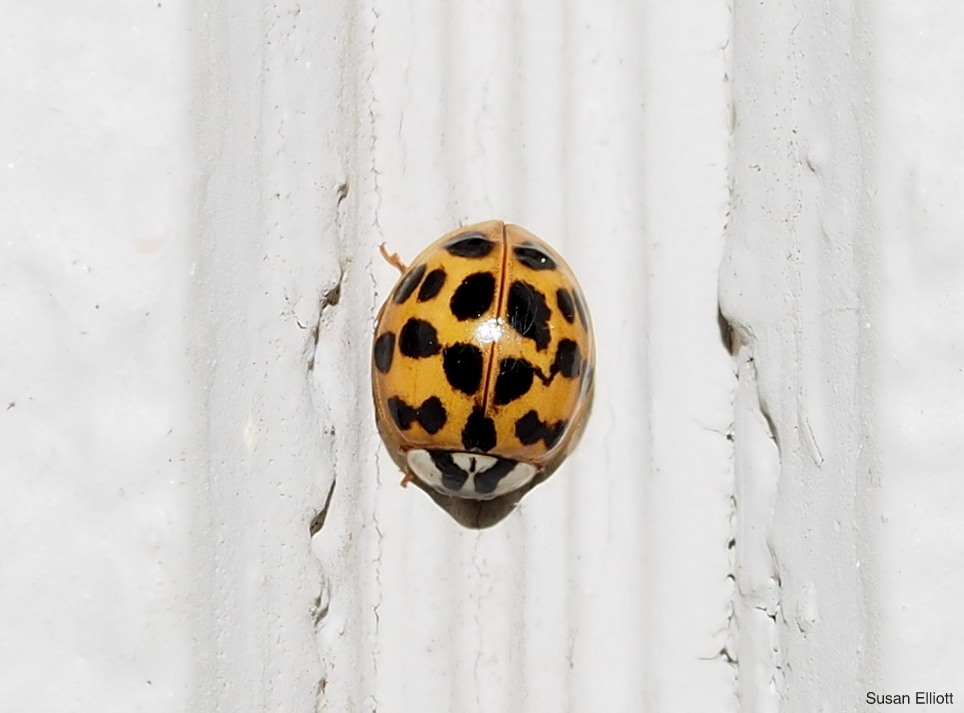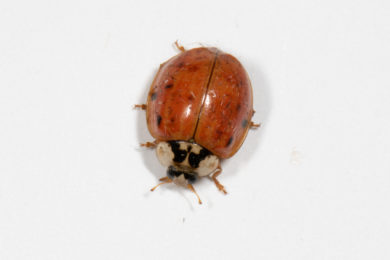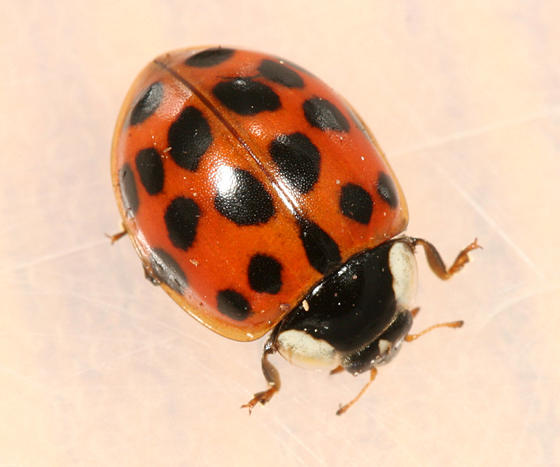
Asian Lady Beetle © Susan Elliott
To many, the Asian Lady Beetle is the classic “ladybug”. Its coloration is most often red or orange, and it can have 0-22 black spots. This species is native to Asia, however it is now found throughout much of North America and in parts of Europe. In the cooler months, Asian Lady Beetles go dormant. You will often find them congregating in warm spots in your house or other buildings. Although ferocious predators of agricultural pests, they have likely played a significant role in the disappearance of many native Lady Beetle species.
Status
Introduced
Last Seen
2021
Fun Fact
Asian Lady Beetles have a surprising number of names — so many in fact that the UK nick-named it the “many-named ladybird”. Some of these names include: harlequin, southern, Japanese, and pumpkin lady beetle.
Identification
The Asian Lady Beetle is between 4 and 7 mm in length, and is oval in shape. This beetle exhibits high morphological variation, with both the elytra and the pronotum varying greatly in appearance from individual to individual.
- The head is off-white to yellow in color, with a black “crown” on the side that connects to the pronotum.
- The pronotum is light yellow to white, with 5 black spots which typically connect to form a solid black trapezoid, two curved lines, or a letter “M” in the center of the pronotum.
- Elytra are pale yellow-orange to black in color. In Vermont, the elytra of Asian Lady Beetles are typically yellow-orange to red in color. Elytra typically have 0 to 19 circular, black spots.
- Legs are a light brown color.
- Commonly mistaken for the Polished Lady Beetle, Seven-spotted Lady Beetle, Convergent Lady Beetle, Eleven-spotted Lady Beetle, Variegated Lady Beetle, and Fifteen-spotted Lady Beetle.
Habitat
Habitat generalist. Can be found in fields, meadows, forests (deciduous and coniferous), orchards, on agricultural crops, in disturbed areas, and in houses (especially during the winter). Prefers arboreal habitats in native range.
General Range
Native to Asia, spread across the U.S and parts of Canada.
Food
Primarily aphids, with a preference tree-dwelling aphids, psyllids, and scale insects. They will also consume pollen, fruit, and other lady beetle larvae, which is thought to be a contributing factor to the decline of several native lady beetle species.
Life Cycle
Usually incubates as an egg for around 3 days, goes through larval stages for around 10 days, and then pupates for 5 days. Adults can live anywhere from a month to 3 years, but typically live from 1 to 3 months.
More Information
You can find more information about Asian Lady Beetles using the following links:
Vermont Distribution
Visit the iNaturalist Observation Map and Occurrence Records to find out where Asian Lady Beetles have been seen in Vermont.








